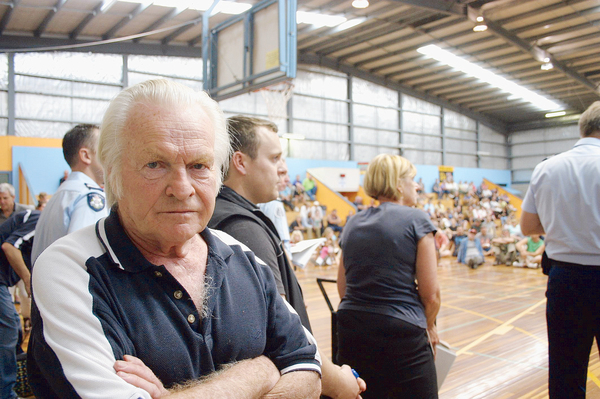By Casey Neill
Yarra Ranges Councillor Len Cox has served his community for 30 years, including six terms as mayor.
“This was the time that has most been imprinted on my memory,” he said of Black Saturday.
“It’s certainly the most important time that I’ve ever served as mayor and a time I will never forget.
“The 10th anniversary is something that we need to remember, we need to talk about, because we need to try to make sure that it doesn’t happen again.”
Cr Cox had been appointed in November and spent January holidaying in Antarctica, where the temperature was negative three degrees.
“My first day back it was 46 degrees,” he said.
“That was about five days before the fires started.
“I had a sat (satellite) phone with me over in Antarctica because I wanted to keep tabs on what was going on in Melbourne.
“What concerned me was that the friend I was talking to told me that there were three days in a row in Melbourne where it was 46 or 47 degrees.”
Cr Cox lives on about six acres of bush in Montrose.
“The day the fires started, I can remember walking around my place…and I was feeling very concerned as to what might happen.
“It was 47 and a hot northerly, the worst conditions you could possibly get.”
That afternoon he received a call from council staff about a fire on the edge of Ryrie Ward, which includes Toolangi, Steels Creek, Dixons Cree, Chum Creek and Yarra Glen.
“That’s when it all started,” he said.
The council set up a control centre at its Lilydale headquarters.
“There was a lot of people here, a lot of experienced firefighters, a lot of experienced police,” he said.
“I stayed nearly all night that night.
“The fire was moving so quickly and so erratically that they just couldn’t follow where it was going to go next.
“Without doubt it was the worst bushfire we’ve ever had.
“They talk about Black Friday and Ash Wednesday but it was nothing like this one.”
Cr Cox drove out to Steels Creek the next day.
“We lost 12 people out of Steels Creek,” he said.
“Going down Steels Creek Road it was just absolute devastation.
“There was nothing left there that wasn’t burnt.
“There was bits of fire all over the place. There were stumps that were still burning.”
He spotted an echidna trying to cross the road, a sight that has stuck with him.
“He must have dug himself into the ground for the fire to go over him,” he said.
Another memory that sticks with him is how the fire stopped almost at the community centre’s front door.
“It hadn’t even been singed,” he said.
“A lot of the locals were there.
“You’d have to say they just had a dazed look on their faces.
“They hadn’t come to terms with what had happened and they were still shocked with what had happened.
“The stories from them, the fire just came out of nowhere.”
Asked how he went about leading the community, Cr Cox said he didn’t think much about it.
“I just felt I had to be out meeting people, letting them talk to me rather than me talk to them,” he said.
He praised council staff for their work alongside emergency services.
“While the fires were going on there was a real worry that the fire wold blow across the Warburton Highway.
“We were very concerned about Warburton.
“We were concerned about the other towns up the highway, too, from Woori Yallock up.”
Cr Cox said Healesville was under fire threat, too.
“The whole of Healesville wouldn’t have gone up but a lot of the outlying areas of it could have been damaged.
“That whole area was really at risk.
“A couple of days later, after the fires started, there were two or three outbreaks in the Dandenongs, too.
“The wind was still blowing really strongly.
“If they had of got going I don’t know what would have happened.”
The council set up camps in Lilydale for those evacuated from the fire-ravaged and threatened towns, and helped residents to find alternative accommodation or settle back in their homes where possible.
“There was a group of volunteers that set up a shop in Yarra Glen and they were collecting donations of food, clothing, furniture – anything that people wanted to donate to them.
“They operated there for some months after the fires. They distributed a lot.”
He said some land burnt in the fires was still vacant.
“A lot of people rebuilt, but there were a lot of people that never did,” he said.
Cr Cox said conditions at the time were perfect for a serious fire.
“The bush was tinder-dry, the grass was very, very dry,” he said.
“We hadn’t had those conditions for a long while before that and we haven’t had those conditions since.
“I believe we are suffering climate change. In our area, climate change means less rainfall and higher temperatures.
“It’s one of the most fire-risk areas in the world, so we must always be aware of that and be cautious.
“Have a fire plan so that if a fire does occur near you, you know what you’re going to do.”







